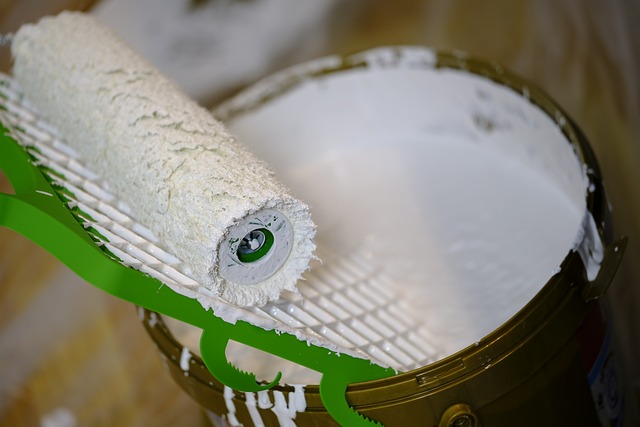So, you’re considering giving your house a fresh coat of paint, but where do you start? Selecting the right kind of paint job is crucial and can be a bit confusing. Let’s walk you through some key considerations that will guide you in making an informed decision for your home’s new look.
Define Your Preferences
Your personal preferences are a key factor in choosing the right paint job for your house. After all, you want your home to reflect your style and personality in a way that makes you feel comfortable and happy. The painters working at theraleighpaintcontractor.com always suggest their clients think about the colors and textures that resonate with them. Do you prefer warm, inviting hues or cool, calming shades? Are you drawn to a modern, sleek look or do you prefer a more rustic, textured finish?
The answers to these questions will guide you in selecting a paint job that suits your taste. Additionally, consider your lifestyle and practical needs. For example, if you have children or pets, you might opt for durable, easy-to-clean finishes. Remember, the paint job you choose can transform your home’s appearance and ambiance, so take your time to consider what you really want.
Evaluate the Surface
Evaluating the surface to be painted is a fundamental step in deciding the right paint job for your house. Every surface has unique characteristics that dictate the type of paint and the preparation required for optimal results. For instance, if the surface is rough or has cracks, you may consider using thicker paint or even a textured finish to mask these imperfections. On the other hand, a smooth, undamaged surface might be ideal for a high-gloss finish.
Moreover, surface evaluation can help identify potential issues like dampness or rot that need to be addressed before painting. Ultimately, understanding your surface’s condition will ensure you choose a paint and finish that enhances durability and aesthetic appeal, adding longevity and value to your house.
Consider Environmental Factors
You should always think about how your projects affect the environment. When it comes to painting, here are some essential factors:
- Climate and weather conditions
- Sun exposure
- Moisture levels
- Air quality and pollution levels
- Altitude and atmospheric pressure
- Exposure to salt and minerals
- Proximity to industrial sites or chemicals
- Vulnerability to natural elements
- Historical or heritage preservation
- Regulatory compliance and VOC levels
- Long-term durability
- Future maintenance
Factors such as climate, sun exposure, and moisture levels can affect the paint’s durability and appearance over time. Additionally, air quality and proximity to industrial sites or chemicals may dictate the need for specialized, resistant paints. Thus, acknowledging these factors ensures a long-lasting, aesthetically pleasing result.

Select the Right Paint Type
Different paint types, such as oil-based, latex, enamel, or acrylic, offer unique characteristics that influence the finish, durability, and maintenance of the painted surface. For example, oil-based paints are renowned for their durability and rich finish, perfect for high-traffic areas and surfaces prone to wear and tear. On the other hand, latex paints are water-based, dry quickly, and offer excellent color retention, ideal for walls that get a lot of sunlight.
Also, considering factors like VOC levels can help you choose eco-friendly options. Therefore, understanding the properties of each paint type will help you select a product that not only enhances your home’s aesthetic appeal but also caters to your lifestyle and environmental concerns.
Choose the Appropriate Finish
Different finishes, from high-gloss and semi-gloss to satin, eggshell, and flat, each provide unique visual effects and practical benefits. Glossy finishes, for instance, offer a shiny, reflective surface that is easy to clean, making them ideal for kitchens or bathrooms.
On the other hand, flat or matte finishes provide a non-reflective, more muted look, suitable for living rooms and bedrooms. Selecting the right finish will not only enhance the aesthetic appeal of your home but also provide the durability needed based on the usage and nature of the space. Therefore, finish selection is a critical factor in achieving a successful paint job.
Budget Considerations
When planning your paint job, budget is a crucial factor that can guide your choices. It’s important to remember, however, that cheaper isn’t always better. While you may be tempted to opt for lower-cost options, they may not offer the durability you need, leading to frequent repaints and potentially higher long-term costs.
Consider the cost of both materials and labor and be realistic about what you can afford. Keep in mind that while high-quality paint and professional services might require a larger investment initially, they can provide a long-lasting, beautiful finish that adds value to your home.
Remember, the right paint job makes your house a home. Take your time to define your style, consider practical aspects, and evaluate environmental factors. Be knowledgeable about the surfaces you’re painting, the right paint type, and suitable finishes. Keep budget considerations in mind, but remember, investing in quality pays off in the long run. Happy painting!
